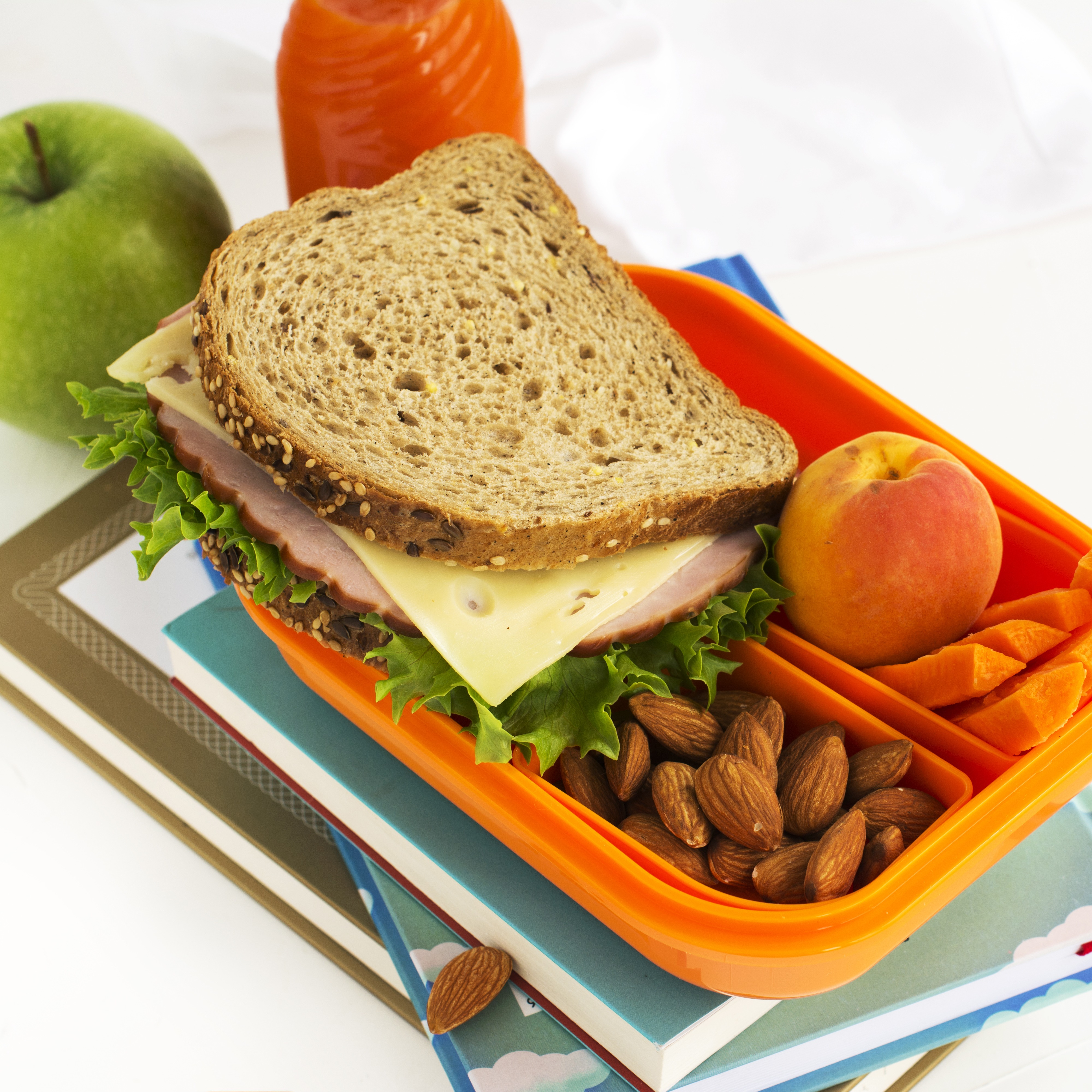It’s back to school time! Which means back to helping with homework, carpooling, after-school activities & packing school lunches! While it can be easy to lean on pre-packaged and processed foods as easy solutions to mealtime, packing fruits and vegetables, proteins, and whole grains can help establish healthy eating habits in younger children. Nutrition doesn’t have to be complicated or boring- check out some easy ways to add healthy options to your children’s school lunches, without sacrificing flavor or fun!
Break down the basics
Let’s break down the basics of a building a nutritious lunch. Leah Haak Beck, a Registered Dietitian at Pullman Regional Hospital, spells it out.
“A good rule of thumb when packing a lunch, or any balanced meal, is to try to include foods from at least 3 of the 5 food groups: fruit, vegetables, calcium-rich food/dairy, protein, and grains/starches. Be sure to prioritize a fruit or vegetable and a protein food, then add other foods your child enjoys from there. Don’t forget a beverage to keep your kiddo hydrated. This basic structure provides a variety of nutrients to keep kids fueled and satisfied.”
- Fruits and veggies: try to squeeze 1-2 servings of fruits and veggies into lunch. These colorful plant foods offer vitamins and minerals, fiber, phytochemicals and even contribute to hydration. Exploring what’s in season, mixing up the selection, and cutting fun shapes and designs are all great ways to make eating produce more fun. Some great lunchbox options include whole or halved grapes, sliced oranges, mini carrots, and sliced bell peppers. Try with a fun yogurt dip, hummus, or ranch dressing.
- Grains and starches: Grains and starches include breads and crackers, pastas, cereals, potatoes, tortillas, and rice. Opting for whole grain choices is a smart move – try to make at least ½ of your daily grains from whole grains. Simple swaps like whole-wheat bread instead of white bread and brown rice instead of white rice are quick and easy ways to sneak in some extra nutrients and fiber at every meal- including lunchtime.
- Protein: Protein is an important nutrient for growth and development. Some sources of protein are nuts/seeds, meat, beans, fish, dairy, and tofu. Avoid protein supplements or protein bars for your child’s lunchbox as these often contain much more protein than smaller bodies need, which can be harmful. Including a protein food at lunch is a great addition to a balanced meal.
- Dairy/Calcium-Rich: Choose fat-free or low-fat dairy products or choose calcium-fortified foods. Calcium-rich foods include dairy products like yogurt, milk, and cheese, as well as plant-based options such as such as calcium-fortified soy milk, tofu, broccoli, oranges, or dried figs. Go with unsweetened when choosing alternative milk to avoid added sugars.
- Drinks: Keep your kiddos hydrated with milk or water most often. Try to steer away from sugary options like soda, fruit punch, or sports drinks. Choose whole fruit over juice most days. Try adding whole or sliced fruits, vegetables, or herbs to water for some added flavor (sliced citrus, berries and basil, cucumber, and pineapple with mint are all fun options).
Need some inspiration?
Try adding some of these easy, nutritious options into your weekly lunch rotation. Most of these options can be packed ahead of time (hello meal prepping!) to make for hassle-free school mornings.
-Turkey and cheese with whole-grain crackers
-Greek yogurt and low-fat granola
-Trail mix (you can make your own with a variety of nuts, dried fruits, and fun add-ins like yogurt chips, dark chocolate, mini pretzels, etc. or purchase premixed bags)
-Clementine oranges- perfect for small fingers to peel if you get a section started for them
-baby carrots and celery with a Greek yogurt dip
-sliced apple with cheese or nut butter
-fruit salad (use a mix of whatever fruits and berries are in season for a delicious, sweet treat)
-air-popped popcorn
-whole grain graham crackers and applesauce
-pita crackers and hummus
Upgrade your lunch gear
Using reusable baggies and plastic or glass containers is an easy way to be environmentally friendly, as well as cut down on costs. Single-use plastic bags and individually packaged foods can really add up. If you plan on packing cooked leftovers or hot food items, a thermos may be a good idea.
Investing in a good quality insulated lunch box or bag for your child not only makes it easy to reuse day in and day out- but the fun patterns, colors, and designs make lunchtime something they look forward to. It’s important to remember that meat, poultry, dairy and eggs should not be stored at room temperature for more than two hours. Luckily, many lunchboxes have a pocket or pouch to include an ice pack. Another fun idea: freeze a small bottle of water for your child and use it as an ice pack for lunch. It’ll thaw by lunchtime and doubles as a drink!
If you or your family is in need of some additional nutrition assistance, the Pullman Regional Hospital Nutrition team is here to help. “Our dietitians work with adults, children, and families to find nutrition solutions that work best for them.” They specialize in a variety of areas including selecting healthy food choices, eating disorders, sports nutrition, diabetes, weight management & more. Explore all their services, as well as learn about scheduling an appointment on the Nutrition webpage.
Here’s to a happy and healthy school year!
